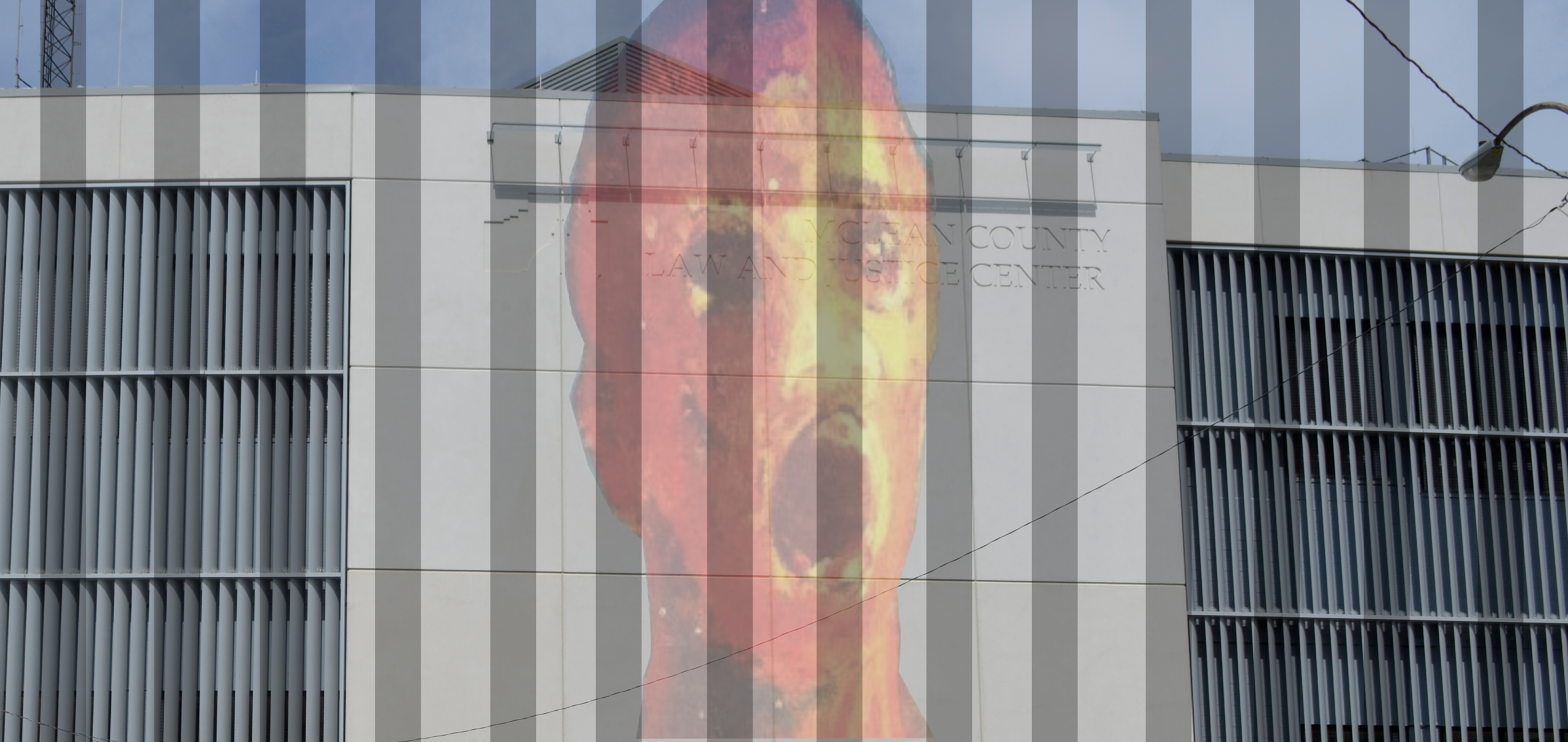4/18/2022; UPDATED: 4/19/2023
Stats from the McLean County Jail, accurate as of April 5th, 2022:
Jail population: 217
Proportions by gender:
are female: 32
are male: 185
Proportions by race:
Black: 115
Hispanic: 13
Persons of a Colonial Complexion: 87
Number of people over 50: 28
Number of inmates sentenced: 23
Number of inmates pretrial (felony): 172
Number of inmates pretrial (misdemeanors): 19
Number of inmates pretrial for drug offenses: 55
Number of out of county residences: 67
The total number of inmates who have tested positive for COVID-19: 151
The total number of jail staff who have tested positive for COVID-19: 49
The current number of inmates positive for COVID-19: 0
The current number of jail staff positive for COVID-19: 1
Total number of inmates vaccinated for COVID-19 by the jail: 137 total on either 3/24/21, 6/8/21, 9/20/21, 1/19/22 or 1/26/22.
The number of inmates with COVID-19 that have required respirators in the jail because of COVID-19 symptoms since August 2020.–0
The number of inmates with COVID-19 that have required hospitalization because of COVID-19 symptoms since August 2020.–1
Total number of jail staff vaccinated for COVID-19: No records are being kept
The number of current inmates that have been fully vaccinated whether in the jail or on their own: No records are being kept.
Jail Mental Health Absent from County Action Plan
On Thursday, April 14th, 2020, the McLean County Board tabled a vote on the County’s updated Mental Health Action Plan. The vote was tabled to next month by a vote of 10-7. District 6 Board Member Elizabeth Johnston made the motion to table noting the document was not yet available for the public and saying, “I saw lots of instances where service providers were asked and given input, not as much where I would have wanted to see participation from community members giving input for what their needs are on the ground.”

On the opposing side was District 9 Board Member Susan Schafer. Schafer is one of the key stakeholders responsible for the creation of the updated Action Plan. She said, “Passing this tonight and tabling it is pretty much dismissing those CEOs and those executive directors of those organizations that will be implementing and making the changes because they are the ones that are going to do the work.”

The Action Plan is an impressive document detailing the many important changes and improvements made since 2015 regarding mental health in the county. But, one thing is noticeably absent from the 156 page document: mental healthcare in the McLean County Detention Facility, the County Jail, run by Sheriff Jon Sandage.
Of the 48,730 words that make up the Updated Mental Health Action Plan, only 570 words refer to the jail in anyway. That’s .01% of the document. When asked why there was so little information concerning the jail, Member Schafer said with a smirk, “Yea, that got kinda left out.”
One of the main recommendations in the original 2015 Action Guide was a major renovation to the jail to improve mental health in the jail. This renovation was completed in 2019 and cost the county nearly forty-three million dollars! So, $44 million dollars of tax-payer money just “got kinda left out.”1
This omission is even more concerning as currently getting information on mental health in the jail is very difficult. According to one source inside the jail, there are only two mental health workers employed that regularly meet with inmates. Only two employees for an average population of 200 inmates. Corrections officers I’ve spoken with confirm there are mental health workers that see inmates, but didn’t elaborate on how many.
As has been reported several times prior, the Sheriff continues to use solitary confinement on inmates. Multiple sources inside the jail confirm that incarcerated individuals are in solitary confinement at least 18 hours a day (in December and January–during a COVID-19 outbreak–people were kept on 23-hour a day solitary). At the Justice Committee meeting, on Tuesday, April 5th, 2022, Sheriff Sandage claimed my information on lockdowns was false. Within days, I had confirmed with at least two individuals inside the jail that the norm is in fact 18 hours a day solitary confinement.2
While in solitary, individuals have very little to occupy their times. Some books are available. Individuals do have access to tablets, which has been discussed in greater detail in previous articles. However, according to the contract with the company that provides the tablets, IC Solutions, there is only one tablet per 5 inmates. Even if someone is able to get a tablet, many features require money to use them. As I said in my public comment at the Justice Committee meeting, better mental health outcomes and solitary confinement are mutually exclusive. There is no universe where solitary leads to better mental health.
Finally, since 2019, it is the Jail’s policy that certain mental health medications that are designed to be time-released are crushed up when given to inmates. This was supposedly to prevent inmates from hoarding medication. One would think that crushing up time-released medications would negate the ability for the medication to be effective. Carol Weddington is currently contracted with the jail to provide tele-psychiatric services. She is currently located in St. Louis and works for the telehealth company Stategies for Success based in Arizona. Might be worth a second opinion when it comes to crushing up medication.
All of this continues to beg the question, since expanding the jail for better health outcomes was explicitly recommended in the 2015 Mental Health Action Guide, what are the results of this $43 million project and why is it almost entirely absent from this updated guide? Furthermore, where in any of these Action Guides does it recommend persistent solitary confinement, lack of mental health staff, and crushing up medication will lead to better mental health?
The Updated Mental Health Action Guide can be viewed at this link. The County Board will discuss it at the next board meeting on Thursday, May 12th, 2022.
